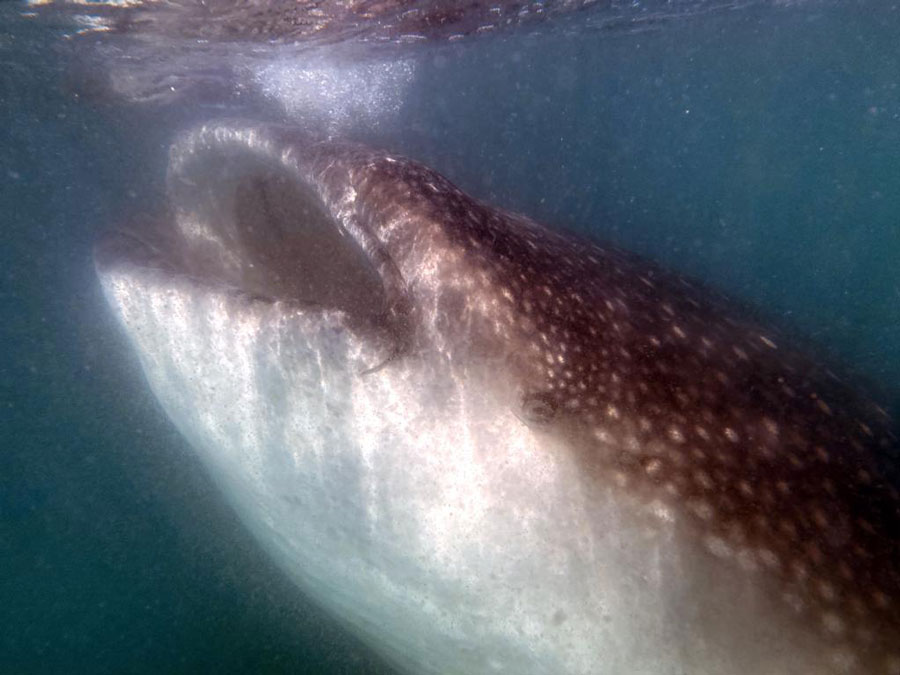I randomly got invited by Teach Me to Dive to join their annual Dive Along at Yellowstone Lake. This is a high altitude dive full of interesting history.
Teach Me to Dive
Ben and Nikki Hadfield are the husband and wife duo behind the Teach Me to Dive community. They are based in Idaho and regularly dive Yellowstone Lake. These two are incredibly passionate about teaching scuba diving and I’m actually discussing the possibility of getting my ice diving training with them this winter. Check out the interview I did with Ben after our dives in Yellowstone.
Scuba Diving in Yellowstone
As I mentioned in my video on solo diving in Grand Teton National Park, please refer to the Superintendant’s Compendium for Yellowstone to see current regulations on scuba diving in Yellowstone Lake. Follow all local regulations and respect the environment by not touching or taking anything from this little visited dive site.
Yellowstone lake is 132 square miles and sits at 7,733ft of elevation, max depth over 300ft
It is the largest high elevation lake in North America (above 7,000ft), and therefore altitude diving training is a must, along with conservative dive planning and emergency equipment.
The lake completely freezes over in the winter and thaws in May or early June. Therefore, the water is normally cold and a drysuit is recommended.
The underwater topography is very similar to what you see on land in Yellowstone: geysers, hot springs and canyons.
The Spires at Bridge Bay
This is a relatively simple, shallow dive site so open water divers are welcome, however, you should only attempt this dive if you have good buoyancy control. This is not only to protect the environment, but also because the bottom is very silty and one wrong move will completely mess up visibility for everyone. The other consideration is the long surface swim. Assess your own comfort in your gear and fitness level before attempting a 20 minute surface swim. One of our divers got around this by taking their gear on a stand up paddle board.
The Bridge Bay spires were discovered in the late 90s and range from 5-35 feet tall. These are essentially hollow pipes or chimneys consisting of silica, thermophilic bacteria filaments, and red and black iron oxide which cause the varying coloration. The formations are thousands of years old, and are incredible to take in. You’re literally swimming through history.
Aside from the spires, Bridge Bay is home to fresh water sponges, algae, bacteria, plants and interesting little leeches.
Mary Bay
This dive is better suited for advanced divers, preferably experienced technical divers. The surface swim is no joke (at least 30 minutes swimming at a strong pace) and there is enough to see at depth that planning a deco dive is beneficial.
The draw to this side of the bay is the geothermal activity. Small and large underwater geysers are located all around the bay. The white stains are evidence of this geothermal activity. These are mineral deposits of silica, calcium carbonate, and sulfur left behind from the mixing of the hot, thermal water with the cool lake water.
Here you can see the hot water coming up from a small geyser, mixing with the cold water making a very distinct thermocline. Some of these geysers are very hot (up to 252F), so don’t stick your hand into the hot water vents. I only tried it after Ben, who is very familiar with this dive site and the different geysers showed that it was safe.
The hot water at depth leads to an interesting experience while diving where you can find temperatures around 48-50F at 70-90ft whereas normal temperatures at that depth in the lake would be low 40s or high 30s. This leads to a significant increase in biological life with different plants and algae thriving on this side of the lake, even at depth. Right at the mouth of these hot geysers, you can see string-like bacteria covered in white sulfur.
Finally, this area is also known for its bubble fields. We didn’t make it to the really active area, but Ben and Nikki have a great video on YouTube showcasing the gas activity bustling beneath the bottom of the lake. This gas is usually made up of carbon dioxide, methane, and hydrogen sulfide.
Yellowstone and Misinformation
Yellowstone National Park is a fascinating place, which unfortunately suffers from a significant amount of bad press. There is a lot of misinformation out there about volcanic activity in this area, so if you want to take a deep dive into reliable sources, check out the U.S Geological Survey website.
Join me on upcoming Azul Unlimited dive expeditions
See what trips are coming up. I always give my community first dibs on spots, so you can sign up for Patreon (and get trip discounts) or my email list to be the first to know about new expeditions in the future.










